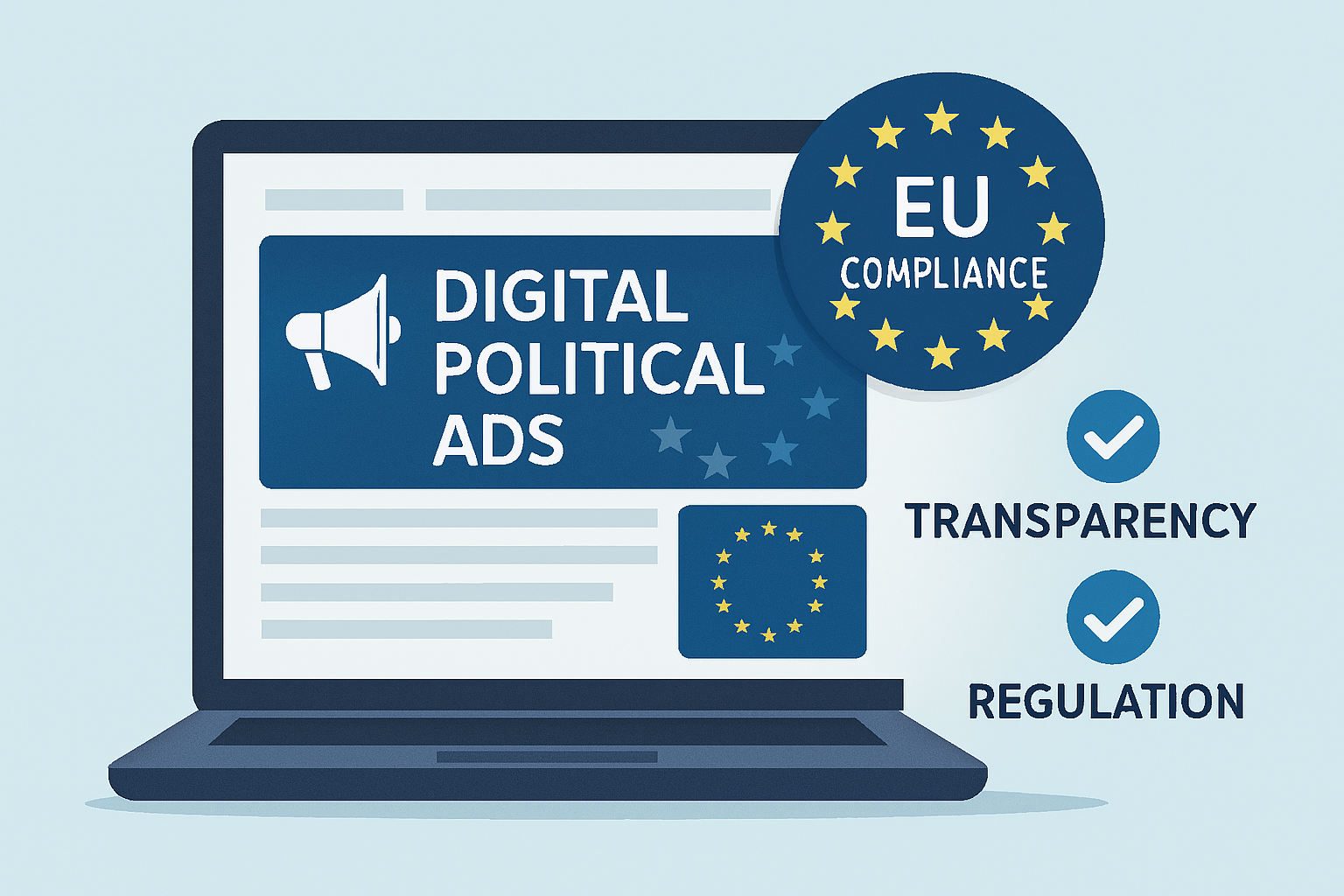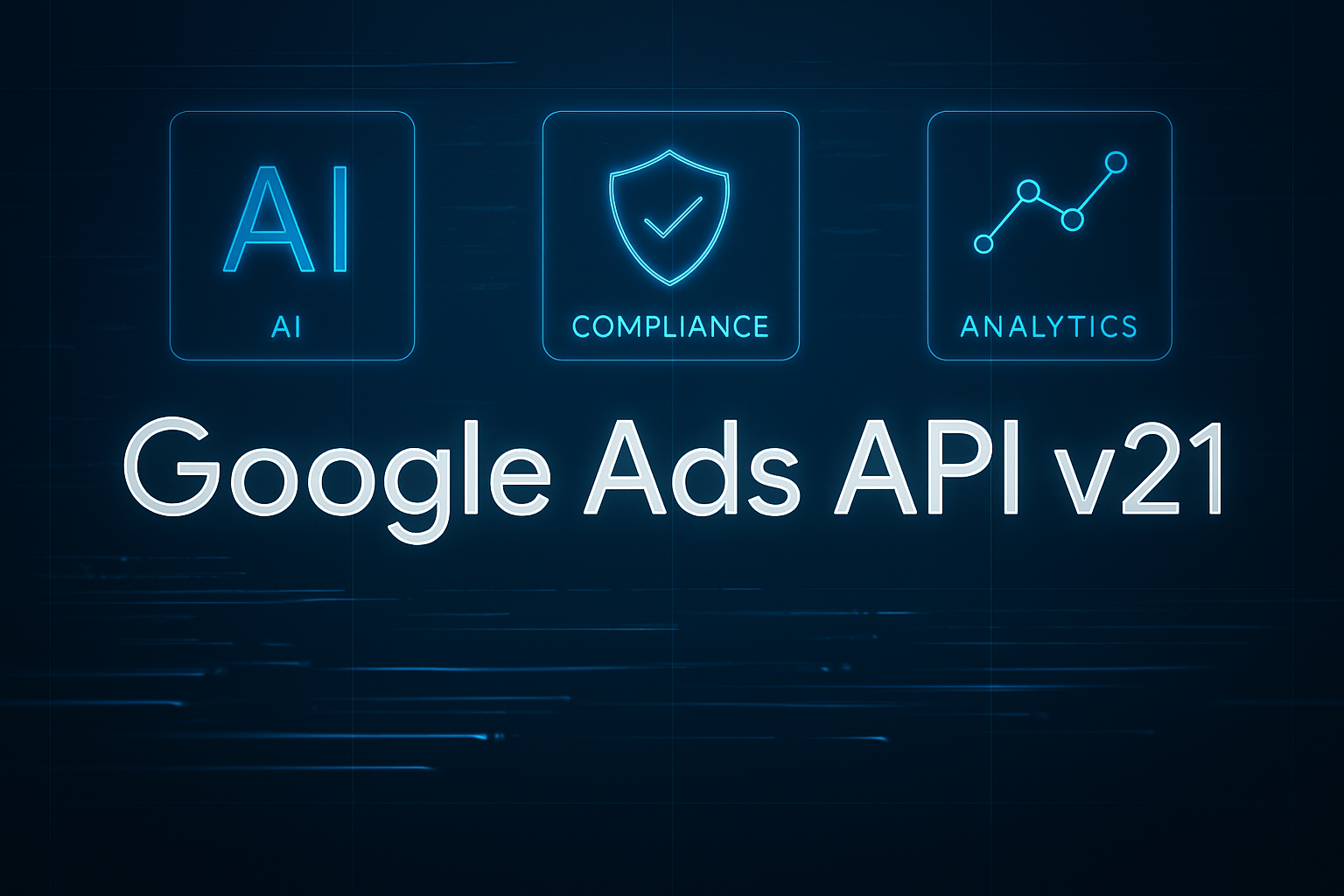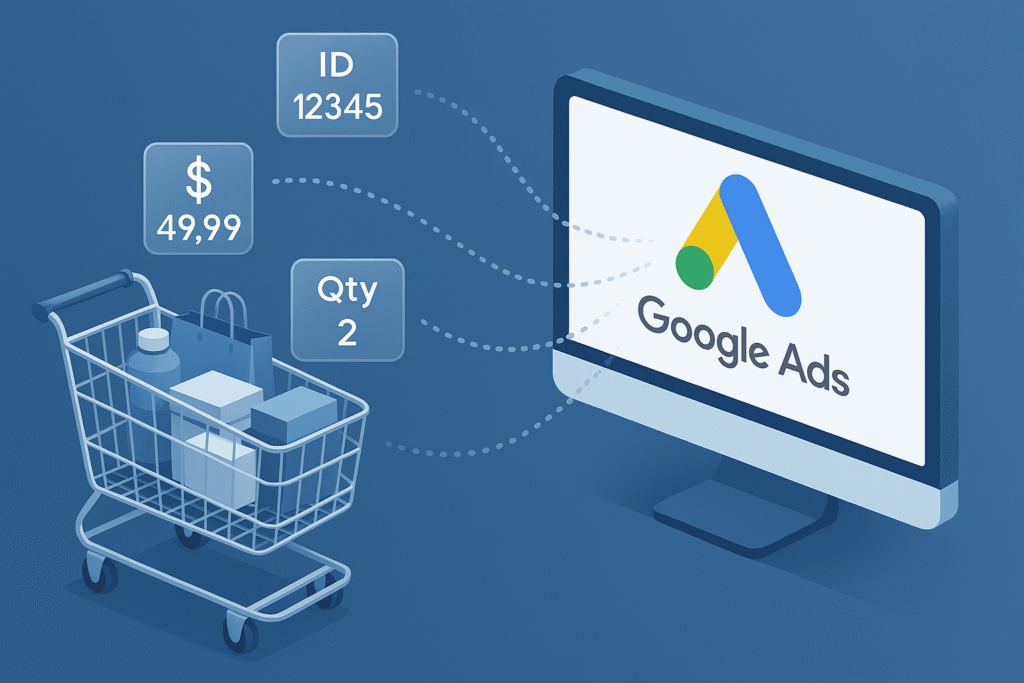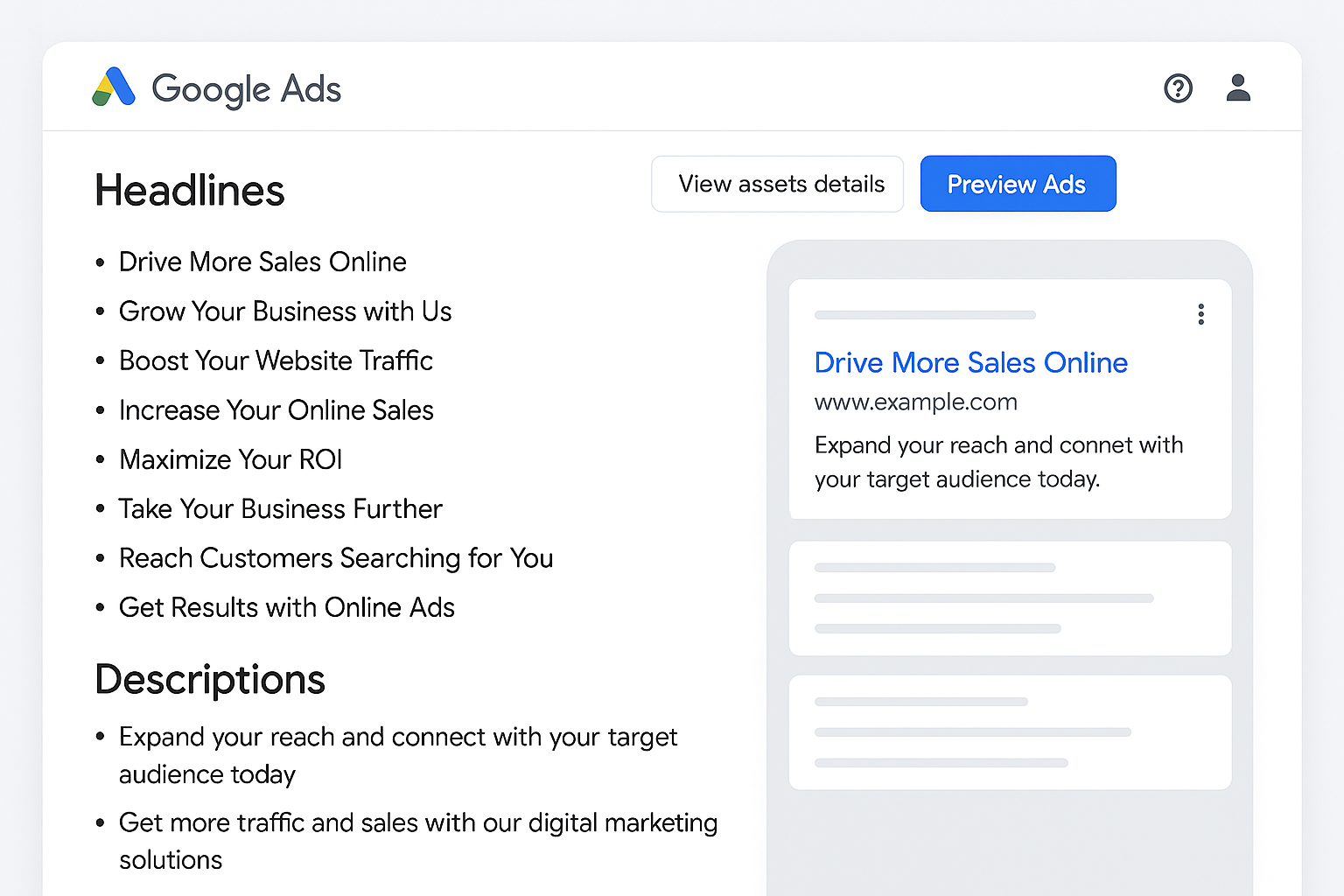Google has officially rolled out Google Ads API v21, bringing a suite of enhancements designed to boost campaign transparency, streamline compliance, and leverage the power of artificial intelligence for smarter ad performance. Advertisers using Google Ads will need to upgrade their client libraries and update their code to access these new features.
This release marks one of the most significant Google Ads API updates of the year, introducing tools that cater to both search advertisers and Performance Max campaign managers.
Stronger Compliance for EU Political Ads
One of the most notable additions in v21 is the contains_eu_political_advertising field. This feature is a direct response to evolving European Union advertising regulations and will be mandatory starting September 23, 2025. Take your business further with innovation. Learn how the modern tool for business success can streamline your operations.

This compliance field allows advertisers to clearly label EU political ads, ensuring better transparency for users and regulatory authorities. The update is seen as part of Google’s ongoing effort to maintain trust in digital advertising platforms while avoiding potential legal pitfalls for advertisers in politically sensitive categories.
For marketers running campaigns across multiple regions, especially those targeting European audiences, this change is not just optional, it’s essential for staying compliant and avoiding ad disapprovals.
Deeper Insights with Campaign Search Term View
The new campaign_search_term_view is another big win for advertisers. This tool offers search term insights specifically for Performance Max campaigns, a feature long requested by marketers who want more clarity on how their ads are being triggered.
Previously, many Performance Max users had to rely on limited keyword data, making optimization challenging. Now, advertisers can see exactly which search terms are driving engagement, helping them make data-driven decisions to refine targeting, improve ad copy, and allocate budgets more efficiently.
With Google’s increasing push toward automation in advertising, the ability to still access granular search term data is a welcome move for agencies and in-house teams alike. Ready to elevate your brand? Check out these top social media marketing strategies to boost engagement and growth.
AI Max for Search: Smarter Keyword Expansion and Ad Creation
Possibly the most buzzworthy part of the Google Ads API v21 update is the introduction of AI Max for Search campaigns. Accessible via ai_max_setting.enable_ai_max, this feature uses machine learning to automatically expand keywords and generate creative assets.
Here’s what it means for advertisers:
- Automatic Keyword Expansion: AI Max will analyze search trends and related queries to add relevant keywords to campaigns without manual input.
- Creative Generation: The system can create new ad headlines, descriptions, and combinations based on brand guidelines.
Additionally, a new performance view allows advertisers to analyze which AI-generated search terms and ad combinations are delivering the best results.
This is a clear signal that Google is doubling down on AI-powered ad campaigns, giving marketers more automation tools while maintaining transparency into what the AI is actually doing.
Automatic Brand Guideline Application
In v21, brand guidelines will now apply automatically to all new campaigns. For advertisers, this means that color schemes, tone of voice, and approved assets will be enforced from the start, reducing the risk of off-brand messaging slipping into live ads.
Brand consistency is crucial, especially for large-scale advertisers managing multi-market campaigns. With this update, businesses can expect fewer manual checks and a smoother creative approval process.
Enhanced Promotion Assets: QR Codes, Barcodes, and Terms of Service
Another noteworthy improvement is the expanded flexibility of Promotion Assets. Advertisers can now include:
- QR codes: Great for bridging offline and online engagement.
- Barcodes: Useful for retail promotions and in-store scanning.
- Terms of Service links: Helpful for promotional disclaimers or policy requirements.
This upgrade reflects the growing trend of integrated marketing, where digital ads interact seamlessly with offline experiences and physical retail environments.
What This Means for Digital Marketers
The Google Ads API v21 release is more than just a technical update, it’s a shift in how advertisers will manage and optimize campaigns moving forward.
- For compliance managers: The EU political advertising field ensures adherence to upcoming regulations.
- For search marketers: AI Max introduces automation without completely hiding performance insights.
- For brand managers: Automatic brand guideline application ensures creative consistency.
- For retail advertisers: QR and barcode integration adds interactive potential to digital ads.
The key takeaway? Google is working to balance automation with transparency, offering marketers both AI efficiency and the performance data they need to stay in control.
SEO Perspective: Why These Updates Matter
From an SEO and SEM strategy standpoint, these updates are significant. AI Max’s keyword expansion could surface long-tail keywords that were previously overlooked, potentially boosting ad quality scores and lowering cost per click (CPC).
Meanwhile, the campaign_search_term_view gives back some of the keyword-level insight that many advertisers feared was disappearing entirely in the age of automation. By combining this insight with strong SEO keyword research, brands can create integrated marketing strategies that align both paid and organic search efforts.
What Advertisers Should Do Next
If you’re currently using the Google Ads API, here’s a quick checklist for adapting to v21:
- Upgrade Your Client Libraries: Without this, you won’t have access to the new features.
- Review Campaign Compliance: Especially if running EU political advertising.
- Test AI Max Features: Start with controlled experiments to see how AI keyword expansion impacts ROI.
- Update Brand Guidelines: Ensure they’re current before the system applies them automatically.
- Experiment with QR Codes: Integrate them into promotions for measurable offline engagement.
Final Thoughts
The Google Ads API v21 update reflects Google’s ongoing mission to merge AI-driven automation with greater transparency and advertiser control. By adding compliance safeguards, deeper search insights, and enhanced creative tools, this release sets the tone for where digital advertising technology is headed in late 2025 and beyond.
For advertisers, the choice is clear: embrace these tools early, test them strategically, and stay ahead of competitors in an increasingly AI-powered ad landscape. Feeling overwhelmed by format choices? Discover the Instagram post format strategy that works best for reach, engagement, and retention.





